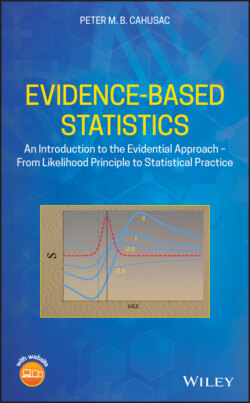Читать книгу Evidence-Based Statistics - Peter M. B. Cahusac - Страница 16
1.2 Statistical Inference – The Basics
ОглавлениеTogether with the data, statistical hypotheses and statistical models are essential components for us to be able to draw inferences. Hypotheses and models provide an adequate probabilistic explanation of the process by which the observed data were generated. By statistical hypothesis, we mean attributing a specified quantitative or qualitative value to an identified parameter of interest within the statistical model. A simple statistical hypothesis specifies a particular value. For example, the null hypothesis for a measured difference between two populations might be exactly 0. A hypothesis may also be a range of values, known as a composite hypothesis, for example the direction of difference in a measurement of two populations (e.g. A > B). By statistical model, we mean the mathematical assumptions we make about how sample data (and similar samples from the same population) were generated. Typically, a model is a convenient simplification of a more complex reality. Statistical inference and estimation are conditional on a model. For example, in comparing heights of malnourished and well-nourished adults, our model could assume that the measurements are normally distributed. We might specify two simple hypotheses to be compared, for example: the null of 0 difference and a population mean difference of more than 3 cm between the two populations. The distinction between hypothesis and model is not absolute since it is possible to consider one of these components to be part of the model on one occasion and then contested as a hypothesis on another. Hence, our model assumption of normally distributed data could itself be questioned by becoming a hypothesis.
